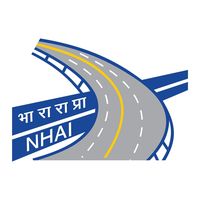Road to Recovery: ARCs Set to Boost Recovery Rates for Stressed Projects
December 1, 2024, 10:01 am

Location: India, Delhi, New Delhi
Employees: 1001-5000
Founded date: 1988
Total raised: $4.83B
The landscape of asset reconstruction in India is shifting. Asset Reconstruction Companies (ARCs) are on the brink of a significant recovery. According to CRISIL Ratings, recovery rates for stressed road projects are projected to rise by 700 to 1,000 basis points this fiscal year, reaching a cumulative recovery rate of 60-65%. This marks a notable improvement from the previous fiscal year, where recovery rates climbed to 50-55% from a mere 21% in FY23.
The journey to recovery is paved with strategic moves and timely interventions. The National Highways Authority of India (NHAI) plays a pivotal role in this transformation. Faster completion of pending construction and the descoping of unresolved issues are key drivers. These actions enable the initiation of annuity payments, which are crucial for debt restructuring and quicker resolutions.
CRISIL's analysis covers approximately 2,500 lane kilometers of stressed road projects, with a total principal debt of around ₹6,000 crore. This represents about 60% of the road assets held by ARCs. The projects fall under various models, including the build-operate-transfer (BOT) and hybrid annuity models. ARCs acquired these assets at an average haircut of 40%.
The roots of stress in these projects can be traced back to delays in land acquisition and obtaining the Right of Way (RoW) between 2017 and 2019. These hurdles, coupled with lower-than-expected toll collections, put a strain on the financial viability of many projects. However, half of the projects in the CRISIL Ratings SR portfolio have now completed construction, while the remaining assets have seen their RoW issues resolved.
The improvement in recovery rates is not just a number; it reflects a more stable financial environment. Stabilizing annuity payments, driven by the completion of pending work, have improved liquidity for ARCs. These payments are now sufficient to service restructured debt, providing a lifeline to struggling projects.
Traffic growth for toll assets is expected to remain steady at 4-6% this fiscal year. This growth is supported by robust macroeconomic indicators, including increased industrial capital expenditure, rapid urbanization, and a rise in exports and tourism. Consequently, toll revenues are projected to grow by 7-9%, further bolstering recovery efforts.
The debt-to-toll ratio, which measures outstanding restructured debt against annual toll collection, has improved from 8.1 to 6 times. Similarly, the debt-to-annuity ratio has strengthened from 0.8 to 0.6 times within just 1-2 years of restructuring. These metrics indicate a healthier financial structure for ARCs, paving the way for faster debt reduction through internal accruals or refinancing.
For non-operational assets or those with claims under dispute, alternative resolution mechanisms are in place. Termination payouts and expedited dispute settlements through conciliation and arbitration are expected to enhance recovery prospects in the medium term. The NHAI's proactive approach in supporting recoveries through termination payouts has also played a crucial role.
A separate study of four terminated road projects with outstanding debt of ₹4,675 crore revealed an average recovery rate of 65-70% within 2-3 years from the termination date. This demonstrates the effectiveness of the NHAI's strategies in mitigating losses and facilitating recoveries.
The NHAI's focus on settling claims has yielded significant results. Between fiscals 2018 and 2023, claims worth ₹48,180 crore across 189 cases were settled at an average rate of 34%. This proactive approach has averted delays caused by prolonged litigations, allowing for a smoother recovery process.
Looking ahead, the continued emphasis on resolving claims for stressed road projects could facilitate the recovery of ₹5,300 crore in claims within CRISIL's portfolio. This potential revival of projects underscores the importance of collaboration between ARCs and regulatory bodies like the NHAI.
In conclusion, the road to recovery for stressed road projects in India is becoming clearer. With improving recovery rates, strategic interventions, and a supportive regulatory environment, ARCs are poised to turn the tide. The journey may be long, but the destination is within reach. As the wheels of progress turn, the focus remains on ensuring that these vital infrastructure projects not only survive but thrive in the years to come.
The journey to recovery is paved with strategic moves and timely interventions. The National Highways Authority of India (NHAI) plays a pivotal role in this transformation. Faster completion of pending construction and the descoping of unresolved issues are key drivers. These actions enable the initiation of annuity payments, which are crucial for debt restructuring and quicker resolutions.
CRISIL's analysis covers approximately 2,500 lane kilometers of stressed road projects, with a total principal debt of around ₹6,000 crore. This represents about 60% of the road assets held by ARCs. The projects fall under various models, including the build-operate-transfer (BOT) and hybrid annuity models. ARCs acquired these assets at an average haircut of 40%.
The roots of stress in these projects can be traced back to delays in land acquisition and obtaining the Right of Way (RoW) between 2017 and 2019. These hurdles, coupled with lower-than-expected toll collections, put a strain on the financial viability of many projects. However, half of the projects in the CRISIL Ratings SR portfolio have now completed construction, while the remaining assets have seen their RoW issues resolved.
The improvement in recovery rates is not just a number; it reflects a more stable financial environment. Stabilizing annuity payments, driven by the completion of pending work, have improved liquidity for ARCs. These payments are now sufficient to service restructured debt, providing a lifeline to struggling projects.
Traffic growth for toll assets is expected to remain steady at 4-6% this fiscal year. This growth is supported by robust macroeconomic indicators, including increased industrial capital expenditure, rapid urbanization, and a rise in exports and tourism. Consequently, toll revenues are projected to grow by 7-9%, further bolstering recovery efforts.
The debt-to-toll ratio, which measures outstanding restructured debt against annual toll collection, has improved from 8.1 to 6 times. Similarly, the debt-to-annuity ratio has strengthened from 0.8 to 0.6 times within just 1-2 years of restructuring. These metrics indicate a healthier financial structure for ARCs, paving the way for faster debt reduction through internal accruals or refinancing.
For non-operational assets or those with claims under dispute, alternative resolution mechanisms are in place. Termination payouts and expedited dispute settlements through conciliation and arbitration are expected to enhance recovery prospects in the medium term. The NHAI's proactive approach in supporting recoveries through termination payouts has also played a crucial role.
A separate study of four terminated road projects with outstanding debt of ₹4,675 crore revealed an average recovery rate of 65-70% within 2-3 years from the termination date. This demonstrates the effectiveness of the NHAI's strategies in mitigating losses and facilitating recoveries.
The NHAI's focus on settling claims has yielded significant results. Between fiscals 2018 and 2023, claims worth ₹48,180 crore across 189 cases were settled at an average rate of 34%. This proactive approach has averted delays caused by prolonged litigations, allowing for a smoother recovery process.
Looking ahead, the continued emphasis on resolving claims for stressed road projects could facilitate the recovery of ₹5,300 crore in claims within CRISIL's portfolio. This potential revival of projects underscores the importance of collaboration between ARCs and regulatory bodies like the NHAI.
In conclusion, the road to recovery for stressed road projects in India is becoming clearer. With improving recovery rates, strategic interventions, and a supportive regulatory environment, ARCs are poised to turn the tide. The journey may be long, but the destination is within reach. As the wheels of progress turn, the focus remains on ensuring that these vital infrastructure projects not only survive but thrive in the years to come.
